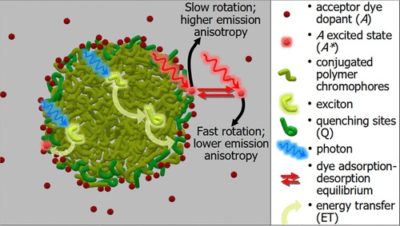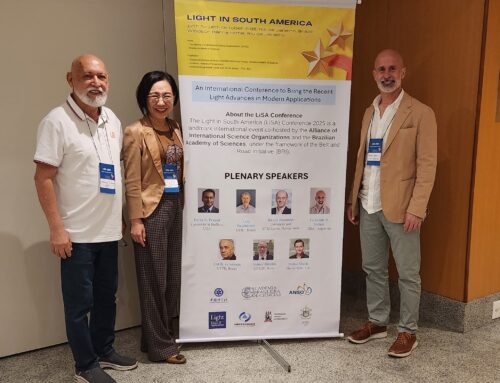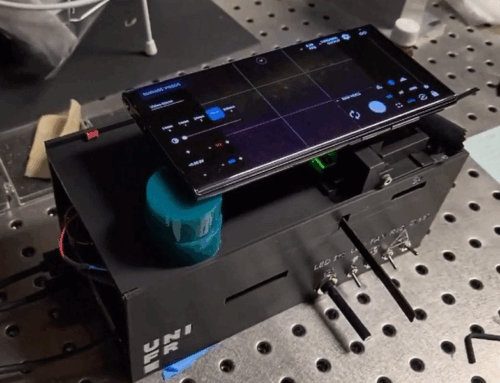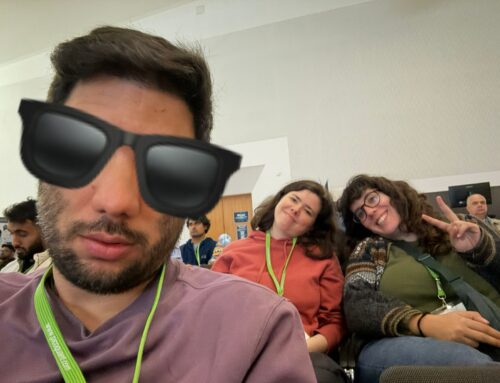Energy transfer in conjugated polymers is a critical process that affects the performance of these materials in diverse applications such as biological–chemical–physical sensing, imaging, photovoltaics, and phototherapy.
In this experimental and theoretical work led by Prof. Rodrigo Palacios (University of Río Cuarto, Córdoba, Argentina), we performed an in-depth study of energy transfer in nanoparticles of a conjugated polymer ( poly(9,9-dioctylfluorene-altbenzothiadiazole – F8BT) superficially doped with controlled amounts of rhodamine B (RhB) dye. In these nanoparticles, the conjugated polymer acts as efficient light absorber and excitation energy donor, whereas the adsorbed dye molecules and non-emissive quenching defect sites (Q) act as energy acceptors. By modelling the polymer emission we could determine the intrinsic exciton diffusion length in the polymer to be of 8.6 nm. The so-called antenna effect (AE), a parameter frequently used to characterize the energy transfer process in donor–acceptor multichromophoric systems, was also calculated, reaching maximum values of ∼40, which compares well with the values reported for similar systems.

The developed model (and associated computational Python code) represents a significant improvement over previous models/codes by correcting inconsistencies and successfully simulating energy transfer processes in confined systems such as nanoparticles, taking into account: exciton diffusion, energy transfer to non-emissive quenching defect centres, energy transfer to dye dopants, spatial distribution of dyes and defects, and individual particle excitation probability among other parameters. The model calculates the ensemble-averaged, time-resolved, and time-averaged emission intensity of CPNs and dye dopants for specific CPN size distributions, allowing for direct comparison with experimental bulk measurements. We envisage that the presented improvements in both the theoretical model and the experimental strategy will prove useful in the study and design of confined energy transfer systems.
This work was part of the Ph. D. thesis of Rodrigo Ponzio, directed by Prof. Dr. Rodrigo Palacios and co-directed by Prof. Dr. Fernando Stefani
- Rodrigo A. Ponzio, Ramiro M. Spada, Ana B. Wendel, M. Virginia Forcone, Fernando D. Stefani, Carlos A. Chesta, Rodrigo E. Palacios
“Exciton diffusion, antenna effect and quenching defects in superficially dye doped conjugated polymer nanoparticles”



